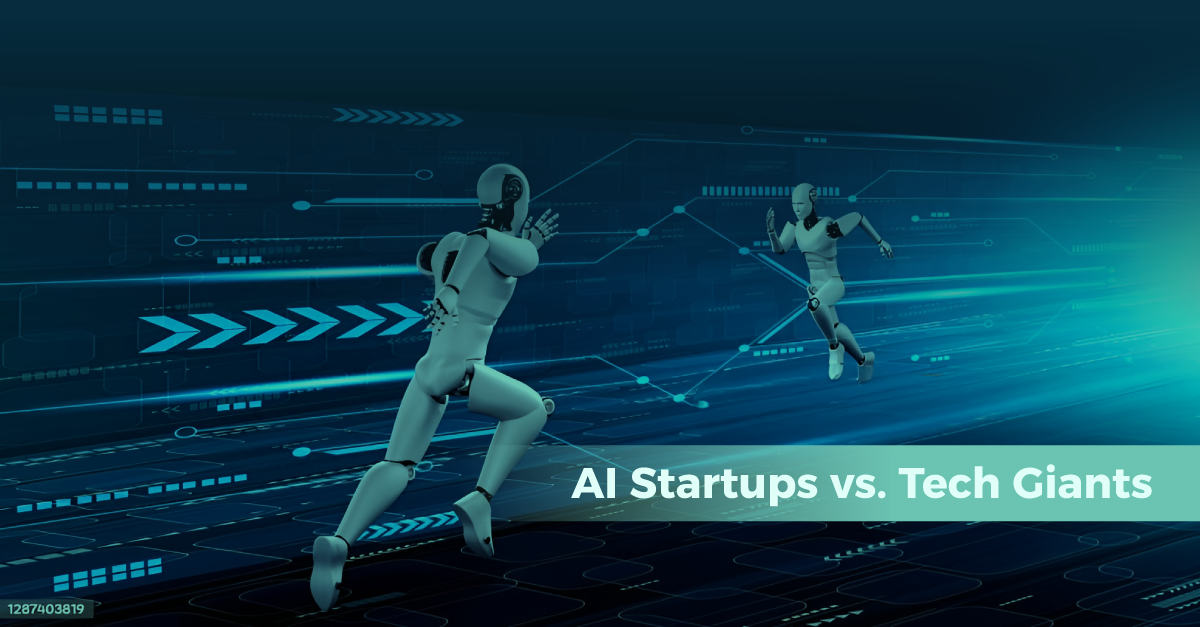The artificial intelligence (AI) revolution is transforming the world, from healthcare to finance to creative arts. But while tech giants like Google and Meta race ahead, AI startups are stuck navigating an uneven playing field. The problem isn’t a lack of vision or talent, it’s access to the critical infrastructure needed to compete.
Compute power, quality data, and skilled professionals are the lifeblood of AI development, yet startups face daunting barriers in securing these resources.
The Compute Power Crunch
Building cutting-edge AI models requires massive computational muscle, typically in the form of high-performance GPUs. For startups, getting access to this hardware is like trying to book a table at an oversubscribed restaurant, expensive and often impossible.
- Sky-High Costs: Training a single large language model can cost between $1 million and $10 million, according to Stanford’s 2024 AI Index. For context, a model like GPT-3 demands roughly 3,640 petaflop/s-days of compute equivalent to thousands of GPUs churning for weeks. Most startups simply can’t afford this.
- Supply Shortages: The global GPU market is strained. A 2023 TrendForce report highlighted a 50% shortfall in supply for NVIDIA’s H100 GPUs, critical for AI workloads, with wait times stretching up to six months. Tech giants, with their deep pockets and long-term contracts, snap up available stock, leaving startups scrambling.
- Stifled Experimentation: Without reliable compute access, startups face delays. A 2022 Gradient Flow survey found that 68% of AI startups reported slower model development due to GPU shortages, hampering their ability to iterate and innovate.
This compute bottleneck doesn’t just slow progress, it locks startups out of the race entirely, as only the biggest players can afford to play.

The Data Dilemma
Data is the fuel for AI, but startups often find themselves running on empty. Tech giants have spent decades amassing vast datasets, while startups are left piecing together scraps.
- Big Tech’s Data Moat: Companies like Google and Amazon sit on goldmines of user data. Google’s 2023 annual report noted over 8.5 billion daily searches, generating behavioral data at an unmatched scale. Startups, starting from scratch, can’t compete with this volume or variety.
- Costly Data Acquisition: Building or buying high-quality datasets is a budget-killer. McKinsey’s 2024 analysis estimated that curating a specialized dataset can cost $500,000 to $2 million, depending on the industry. For cash-strapped startups, this is a non-starter.
- Quality and Bias Risks: Many startups rely on public or scraped datasets, which often come with flaws. A 2021 Nature study revealed that 70% of public datasets used in AI training had inconsistencies or biases, leading to models that underperform or perpetuate harmful stereotypes.
Without access to robust, diverse data, startups struggle to build models that can rival those of established players, limiting their impact and reach.

The Talent Tug-of-War
AI innovation depends on brilliant minds, but the competition for talent is fiercer than ever and startups are often outgunned.
- A Shrinking Talent Pool: The demand for AI expertise is skyrocketing. LinkedIn’s 2024 data showed a 74% year-over-year surge in demand for roles like machine learning engineers and data scientists. Yet, the global supply of PhD-level AI researchers is just 20,000, per the AI Index.
- Big Tech’s Allure: Tech giants offer salaries and resources startups can’t match. A 2023 Glassdoor analysis found senior AI engineers at companies like DeepMind earn $300,000–$500,000 annually, while startups typically offer $150,000–$200,000 for similar roles.
- Retention Struggles: Even when startups snag talent, keeping them is tough. A 2022 VentureBeat survey revealed that 45% of AI startup employees jump ship to larger firms within 18 months, lured by better tools and career prospects.
This talent drain leaves startups lean on the expertise needed to push boundaries, forcing them to do more with less.
Why This Matters: The Cost of a Centralized AI Future
When compute, data, and talent are concentrated in the hands of a few tech giants, the entire AI ecosystem suffers. A 2023 OECD report warned that centralized control risks reducing diversity in AI development, leading to model that are less inclusive and more prone to bias. For example, a 2021 Algorithmic Justice League study found that 80% of commercial AI models showed gender or
racial biases, often due to homogenous datasets and development teams.
Startups are the antidote to this trend. They bring fresh ideas and challenge the status quo. Companies like Hugging Face, with its open-source model hub, or Anthropic, focused on safe AI, show what’s possible when smaller players get a chance. But without access to infrastructure, these success stories could become
the exception, not the rule.
A Call for Change
The AI revolution should be a rising tide that lifts all boats, not just the superyachts. Initiatives like the proposed National AI Research Resource (NAIRR) in the U.S. aim to provide startups with subsidized compute and data access. Meanwhile, companies like Vertical Data are working to bridge the gap by offering innovative solutions to make high-performance infrastructure more accessible.
The future of AI depends on empowering startups to compete. By breaking down these infrastructure barriers, we can foster a vibrant, diverse ecosystem where bold ideas thrive, driving innovation that benefits us all.
Subscribe to our newsletter here: https://verticaldata.io/newsletter-subscribe/
